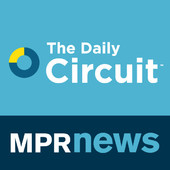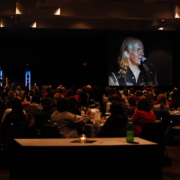Do Over
What if something that you knew for a long time, depended upon, built your entire identity and career around, was suddenly and irreversibly stripped away from you? What would you do? For some people, this question is more real than imaginary. In recent years, many people have lost their jobs, businesses, homes, health, marriages, loved ones and even their pets. The lives that they had once taken for granted no longer exist. Wishing won’t bring back the past. Hoping that all this change will settle down soon so that life can resume to “normal” won’t do much good, either. Change is now the new “normal.”
The change that’s happening to people these days is far sweeping and often abrupt. It may begin with a job loss or health problem. It may be a change in business climate or relationship. When the change is big enough, it eventually reaches into other aspects of life, making little difference where, when or why it started in the first place. Sometimes the only solution is to start over.
In more ways than one, life can look like a do-over right now. How many people do you know who are starting over because of some major change or shift that has taken place for them? If you are experiencing extraordinary change in your life, there are probably moments of confusion where nothing seems to make sense. It may comfort you to know that there’s at least part of an explanation for this. Among the reasons why the world is going through such rapid change recently is related to technology. Have you noticed how it, too, has sped up?
Thanks to technology, people are able to connect like never before—immediately and over long distances through voice, text and video. Since it doesn’t take very long (in some cases, no time at all) to reach people, expectations begin to rise with the speed of communication. People do their best to respond more quickly with new ideas and better solutions. This is how change accelerates.
The result is that new ideas start to replace older ideas more rapidly. In some cases, it happens so quickly that the process seems invisible. There is a name for what happens when new ideas replace old ideas, making them obsolete: it’s called creative destruction. At first impression, creative destruction seems like an oxymoron. How can you create and destroy at the same time? However, if you think about it, creative destruction happens all the time in nature. A flower blossoms and fades away so that its seeds can be formed. Little chicks and baby birds have to crack open and destroy their egg shells in order to enter the world. Salmon have to swim upstream and die in order to procreate and form larger pools of fish. Creative destruction is happening all around us.
Perhaps you know of a neighborhood that has gone through a similar process. The street may have been a booming place in the 1920s or 1930s, but then something happened that caused it to lose its appeal. Maybe a factory closed down or a highway was rerouted. Years later, somebody comes along, appreciating the character of the buildings and sees new potential for the old neighborhood. Buildings are restored, new businesses start up and the neighborhood prospers once again.
Wherever you see creative destruction, it’s a sign that something innovative is happening. Something new and more exciting is emerging. The old cliché is true: When one door closes, another door opens. Think about it. When you focus on what isn’t working in your life, you are spending time and energy on the door that is closing. Consider, instead, the door that is opening. Initially, you may feel awkward and a little unsure, but the feeling is only temporary. What waits beyond the door that is opening will stretch you and help you grow. It will show you a side of yourself you may not even know existed. It will exercise your strengths and create new opportunities for you.
In Billy McLaughlin’s case, a door didn’t simply close. It slammed shut at the height of his career. Billy had to find a way to reinvent his purpose, process and profession—he had to open a new door because the old door was locked. Instead of viewing his affliction with dystonia as the end of his career, he approached it as a new beginning. As ambassador for dystonia medical research, the purpose for Billy’s performances has expanded greatly. He is building worldwide awareness of the Dystonia Medical Research Foundation and the work they do to improve treatment and eventually cure dystonia. This neurological disorder afflicts not only musicians like Billy McLaughlin, but people of all ages and in all professions with varying degrees of debilitation.
Because of dystonia, Billy McLaughlin ceased to be a right-handed guitarist. It became utterly impossible for him to perform arrangements that he had composed and played thousands of times before. Regardless of the fact that he lacked the means to play, his music was alive inside of him as much as ever. In order to express it again, Billy had to learn a new process. Instead of lamenting over what he had lost, Billy chose to focus on what was working. He began the arduous task of learning to play guitar with his opposite hand, something no other guitarist has ever attempted. Musically, Billy McLaughlin is accomplishing as much, if not more, as a left-handed guitarist as he had achieved when he was a right-handed guitarist. He has composed new music and performed in concerts that are being televised nationally. PBS is currently airing Billy McLaughlin performing “Starry Night” in concert with Orchestra Nova, conducted by Jung-Ho Pak. He says, “It’s one of the coolest things I’ve ever done.” The schedule for “Starry Night” on PBS is published on Billy’s website.
Professionally, Billy McLaughlin now plays to a different audience than when he was on tour as a recording artist and Billboard top-ten entertainer. Billy is speaking to corporate audiences worldwide, sharing his message that nothing’s impossible, regardless of how overwhelming it may seem. Billy McLaughlin is a walking, talking and music-making example of doing the impossible. Billy’s inspiring life story helps people transform impossible circumstances into achievable results through persistence, innovation, discipline and creativity. He has received accolades and standing ovations for his corporate presentations at Microsoft, Accenture, Mayo Clinic, Securian Financial and Wells Fargo, to name a few. Through music, stories and occasional humor, Billy McLaughlin shows in a very personal way that clarifying your purpose, committing to your mission and celebrating every step along the way enables you to navigate through difficult challenges and circumstances.
There is no crystal ball to guide you through the extreme challenges that come along with creative destruction. There are no guarantees that you’ll find passage through a new door when an old one closes. The next best thing, however, is the reassuring strength and guidance from one who’s faced impossible odds and has overcome them successfully. Billy McLaughlin is living proof that reinvention is not only probable, but preferable in many ways. Billy’s insights, achieved through personal experience, help you see beyond the self-doubt and limiting behaviors that hinder your ability to overcome obstacles.
Watch Billy onstage and you’ll sense the absolute joy he feels while he is performing. His happiness comes in part from the pleasure of doing what he loves. A greater portion of his joy, however, comes from an appreciation he’s gained, after years of struggle, to be sharing his music once more. Had he given in to his illness, Billy’s life would have turned out much differently. His ability to perform would have ceased to exist as the odds of his ever playing again were stacked strongly against him. The fact that Billy’s return almost didn’t happen is the reason why he never takes the experience for granted. Despite impossible challenges, Billy McLaughlin has created a new beginning.
###




